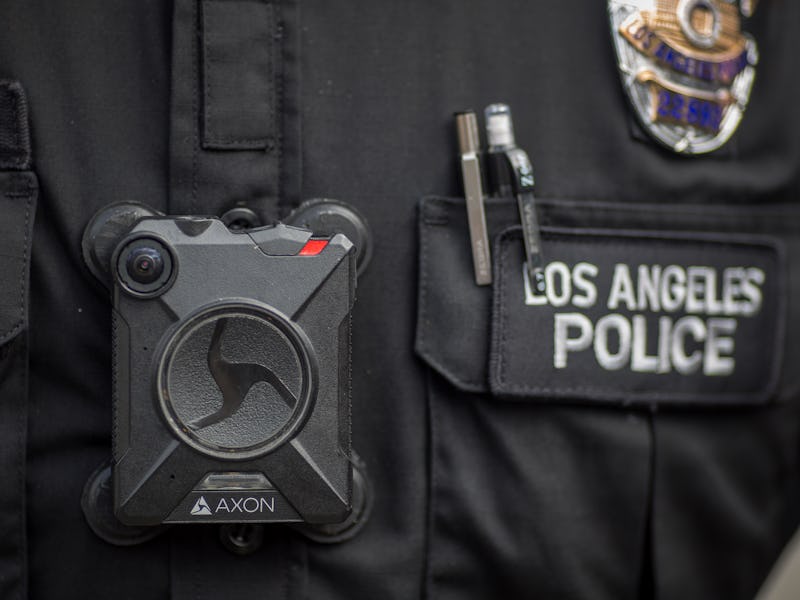TASER's Free Body Cams Are Building a Massive Police A.I.

TASER, the world-leading maker of stun guns, has a new name, Axon, and a new business plan: to build a massive artificial intelligence using video data from its new police body cameras. Last week, the company announced that it would offer a free body-camera for every police department in the United States, if they agree to have that camera’s video stream back to Axon.
Axon has been using its Evidence.com platform to host police data since well before its name change, but the company’s new A.I. initiative could dramatically expand what it can do with that data. Axon VP and TASER co-founder Steven Tuttle told Inverse that even without the free camera program, the company already has about seven petabytes of video footage on Evidence.com — and no real ability to turn that mass of information into something useful to the justice system.
Body cameras have proved popular with both police and the public, as both sides seem to think that a constant, unbroken video record of incidents will protect them from illegal behavior, or a he-said-she-said situation during disputed cases. Body cameras seem to be inevitable, but it’s still unclear how their feeds could be useful beyond the occasional dance video or investigation into abuse.
“There’s a lot of information that we could extract out of [the video we have],” Tuttle says. It would be useful, he continued, “if we could find humans in the videos, if we could apply some type of translation about what’s being said… if the cameras could read lettering like drivers license numbers… and write up a basic report.”
Despite the company’s near-total name recognition — TASER is as synonymous with a stun-gun as Kleenex is with tissues — it chose to change its name to Axon to reflect its new data-driven mission. “When you think of TASER, what do you think of? Stun guns,” Tuttle says. If the company was gravitating toward data science as the biggest opportunity to change policing, the branding had to change accordingly.
Right now, the company says that it can take about four hours of work to prepare a single hour of video for release. From identifying and blurring the faces of bystanders, to generating an official report on the incident, there’s a lot of work to do before any recording of an arrest can be released, or used in court. Each step requires officers to spend time and energy on paperwork, when they could be doing useful policing.
“How do we achieve that dream of having an officer be paperless?” Tuttle asked. “That was our big motivation.”
Despite the company’s ambitions for the future of the technology, for now it’s turning out to be more than difficult enough just to find faces in shaky, blurry camera footage, let alone identify that face as a particular person. “People think we’re doing facial recognition… black helicopter stuff,” Tuttle said. “Well, no we’re not, we’re not even there yet.”
Yet is the operative word, however. “We’re at a real inflection point,” Tuttle pointed out, saying that “a tsunami of data is coming soon,” with or without their offer. Body cameras are a trend that’s coming no matter what, he says. Axon is just taking the steps necessary to make sure it’s ready and waiting to take advantage of them.